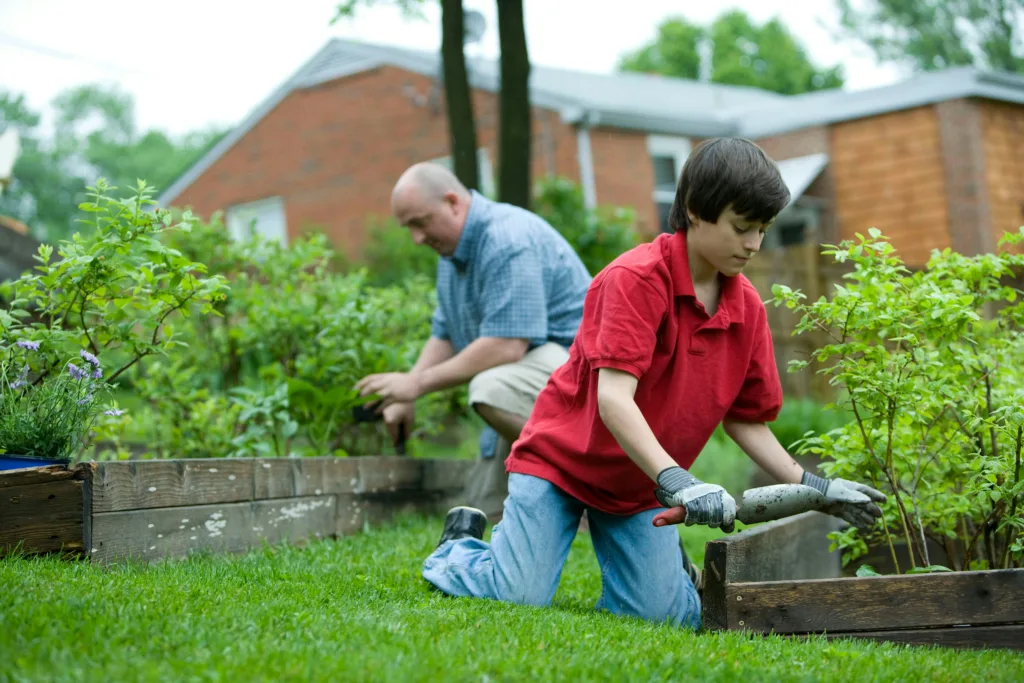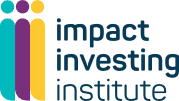
Cambridge Associates provides investment portfolio management and advisory services to institutional investors, including foundations and endowments, pensions, private clients, and corporate and government entities.
Coleman Long, Managing Director, Outsourced Chief Investment Officer and Investment Team Lead, talks about the firm’s approach to sustainable and impact investing and its seminal work creating a sustainable investment portfolio for the Esmée Fairbairn Foundation.
How is impact investing defined at Cambridge Associates?
Coleman: Cambridge is a mission-driven firm. We see ourselves as partners to charities and endowments so we’re always trying to create a strategy that is bespoke to them and what they’re trying to do, rather than saying: “Here’s our definition of an investment or a social impact – take it or leave it”.
That said, there are some core beliefs that guide us. First, we believe there are environmental and social justice issues that create material systemic risks and that should be addressed when allocating capital on behalf of long term investors. We also strongly believe that when you’re thinking about integrating impact and sustainability, you don’t have to choose between financial returns and impact. That’s a core belief for us and it’s important to make that clear upfront.
How does sustainability and impact investing at Cambridge Associates feed through to the rest of the organisation?
Our Sustainable & Impact Investing team has its own division, but it also has a very prominent role in terms of training and interacting with the other units. For example, everyone involved in research is trained to integrate a general ESG component, a DE&I component, and a net zero component into their due diligence of managers and funds. So no-one is in a silo that’s isolated from SII issues.
Equally the SII team is involved in the firm’s strategy at the highest level, whether in terms of securing resource, setting standards or determining what industry groups we join. So there’s a lot of agency in terms of making it easier for us to implement SII-focused strategies for our clients.
What are the most exciting areas of the impact investing market for you? And what are not so great?
For us, the energy transition probably offers the most robust and exciting investable opportunity set for a variety of reasons, including the potential for measurable impact and all the different ways to invest in it. That accounts for the majority of opportunities across asset classes, both liquid and private. Biodiversity is another area, although at a much earlier stage than energy, where we see similar trends and lots of potentially implementable ideas.
On the naughty step, there is just a proliferation of bad products in general. However, we view our role as a filter for clients. So we try to find third-party funds that are genuinely well aligned with their aims. And if you do the due diligence, there are some great ideas out there.
What are the processes you use to source and assess impact investing opportunities?
We have a very high bar for any manager or fund to be approved. We have an incredible network of researchers – over 100 people across the globe purely doing manager research, including 14-20 people looking specifically at sustainability & impact (SII). This level of coverage means we know pretty much all the key players globally, so in terms of idea flow, we’re very spoilt.
To filter ideas, we try to find the best managers in the world, including for SII. We look to get to conviction relatively quickly, but we also want to invest with the right managers at the right time. Finally, we want to make sure that we’re getting the best economics for clients in terms of expected return and how fees are structured.
What makes us different is our depth of qualitative judgement, especially about the people and teams involved. There is are a lot interesting ideas out there, but having a sustainable & impact investing label does not automatically mean something is good.
What does that qualitative judgement involve?
It involves a lot of work actively meeting a manager, checking with the rest of our network and talking to people who have worked with them. If it is new manager, we’re looking to understand do they have relevant experience? Do they have expertise that is repeatable and that aligns with a strategy we would want to fund? It is easier to assess more established strategies because you can see the track record. But in all cases, it is very much about assessing the quality of the people and what they are going to be like as a partner.
Going beyond that qualitative work, we have also been working on creating an analytic framework that allows us to assess managers systematically as leading, lagging or somewhere in the middle. The hope is that we can be much more effective with our engagement and push managers to do more and be better.
What does that manager engagement typically look like?
Most of our manager engagement on SII issues has been about transparency on environmental targets. How are you aligning your portfolio with net zero? Are you setting clear targets and reporting standards?
It is really helpful for us when a client like Esmée Fairbairn has a net zero strategy. We can then say to managers: “This is important to our clients. Here is their policy – this is why we are asking you these questions. We noticed that this is the amount of information you gave last year – can you provide more?”
Just letting managers know that we are monitoring these things has helped a lot. We have seen a lot of small wins in terms of the asset management industry moving a little quicker than it has in the past. Even historically reticent sectors like hedge funds have got much better at disclosure and understanding how their portfolios could be part of a climate-aware strategy.
Some of the most interesting change is actually happening among more mainstream funds that you would not necessarily call impact funds. But these are the funds where clients can potentially benefit most in terms of getting the industry to talk about, say, science-based targets and net zero transition plans.
Have there been any examples of managers being downgraded or removed from your buylists because they haven’t aligned themselves with client preferences?
Because our due diligence process is so deep, you do not see us chopping and changing managers very often. If we do take a manager off our buylist, it is usually for an alignment or organisational issue that means the manager is no longer what we thought they were when we first hired them.
Also, swapping one fund for another because a metric looks better is not really that helpful. What is more impactful is actually getting managers to change. This is part of the motivation behind our decision to add more depth and breadth to our manager monitoring framework on SII issues across all asset classes. By having more data points, we can potentially engage more with managers and hopefully help them to see how their practices could be better.

How long have you been working with the Esmée Fairbairn Foundation and what’s the nature of your partnership with them?
We have been working with Esmée for over 20 years. The partnership has evolved from a traditional consulting relationship to a more sophisticated approach as alternative assets got integrated. Now I think they would view us as almost like an outsourced CIO that works in collaboration with them. We do everything with the approval of the investment committee, but there is a high level of trust, so a lot of the implementation is delegated to us in terms of finding managers and trying to get the strategy right.
How has that relationship with Esmée evolved to address sustainability and impact?
Around 2016 we sat down with Esmée to assess what it believes and its long-term investment principles. That was the first time we teased out a willingness to be different in how they think about risk, a willingness to be innovative and to take a longer-term view. Bringing together these elements resulted an investment policy statement that – if you read it – you’d know it was a distinctly Esmée strategy.
So this set the stage for what became a much more prominent role for sustainability and impact in the portfolio. That opened the door to an initial ‘sustainability’ carve-out using a number of ESG-focused strategies. Then we started to explore how the foundation might invest across the spectrum of capital, from finance-first to sustainable and impact investments. By 2020-21, the focus was on creating a framework to address major long-term risks and opportunities, including developing a net zero framework to cover the whole portfolio.
Esmée have discussed how the bulk of the portfolio is in ‘sustainable’ investments but that there’s also an allocation to ‘enhanced sustainability’, which you also manage. What do you see as the role of that additional allocation?
In the main portfolio, Esmée is typically allocating to high quality strategies with very established track record. The ESA allocation allows Esméeto be more creative and catalytic, and explore things that are a little bit new, maybe a first-time fund or a newer asset class. It means we can look at strategies a little bit earlier, provided we trust the process and the people involved in them, so it’s super, super interesting. Sometimes Esmée might say no to something we suggest for the ESA and that’s fine. But if we can be catalytic and help to get something off the ground because it meets all our criteria, that’s great.
How has the investment policy statement (IPS) evolved to reflect this work?
We worked with Esmée to revise the IPS in 2023 – first to make it more succinct and to get rid of elements that had become outdated, but also to be bolder and upfront about sustainability as an investment objective.
The process of updating the IPS was collaborative and highly iterative. We got feedback from everyone at Esmée – staff, from the board and the investment committee. One key piece of feedback was that people got distracted by having too much emphasis placed on certain financial metrics (and related financial jargon) that took away from the longer term focus of the policy. Therefore, a lot of the traditional material about asset allocation and implementation was moved to the appendix, making the main document much clearer, simpler and bolder.
Has your work with Esmee feed into how Cambridge works with other clients?
Esmée were early in adopting net zero framework and that has certainly been refined and used in our work with other clients. This partnership helped us to try new things, and other Cambridge clients are benefitting from that. Also some of the work that we’ve done on assessing ESG progress for Esmée has led to a more standardised approach to how we measure ESG for all clients which is now seen in the key aspects of our updated manager evaluation framework we discussed earlier.
Perhaps most of all, working with Esmee has improved the way we think about long-term planning and risk, which is really key to this work in sustainability and impact. We hope many more clients can learn from that.
Are there any other elements of how Cambridge operates in the impact and sustainability space that have been key to your success?
I think it is the community that is really important. We view this as a shared effort, so we work in collaboration with clients, managers, and industry working groups. We share information and we try to create this virtuous ecosystem of best practice.
After all, we are not going to create a successful sustainable and impact investing market with just with one fund. It is going to take a collective effort of best practice and a few leaders willing to push the envelope and create a positive peer pressure to do things that are a little bit different.
